

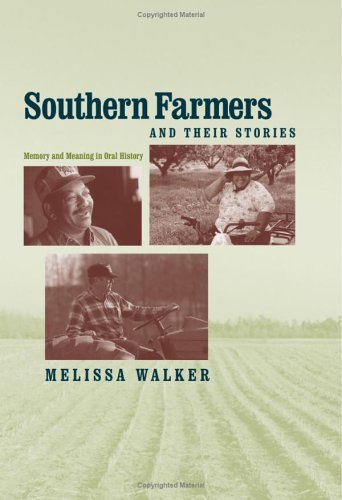
New Directions in Southern History
Series · 16
books · 2006-2021
Books in series

#2
Lum and Abner
Rural America and the Golden Age of Radio
2007
In the 1930s radio stations filled the airwaves with programs and musical performances about rural Americans—farmers and small-town residents struggling through the Great Depression. One of the most popular of these shows was Lum and Abner, the brainchild of Chester "Chet" Lauck and Norris "Tuffy" Goff, two young businessmen from Arkansas.
Beginning in 1931 and lasting for more than two decades, the show revolved around the lives of ordinary people in the fictional community of Pine Ridge, based on the hamlet of Waters, Arkansas. The title characters, who are farmers, local officials, and the keepers of the Jot 'Em Down Store, manage to entangle themselves in a variety of hilarious dilemmas. The program's gentle humor and often complex characters had wide appeal both to rural southerners, who were accustomed to being the butt of jokes in the national media, and to urban listeners who were fascinated by descriptions of life in the American countryside.
Lum and Abner was characterized by the snappy, verbal comedic dueling that became popular on radio programs of the 1930s. Using this format, Lauck and Goff allowed their characters to subvert traditional authority and to poke fun at common misconceptions about rural life. The show also featured hillbilly and other popular music, an innovation that drew a bigger audience. As a result, Arkansas experienced a boom in tourism, and southern listeners began to immerse themselves in a new national popular culture.
In Lum and Abner: Rural America and the Golden Age of Radio, historian Randal L. Hall explains the history and importance of the program, its creators, and its national audience. He also presents a treasure trove of twenty-nine previously unavailable scripts from the show's earliest period, scripts that reveal much about the Great Depression, rural life, hillbilly stereotypes, and a seminal period of American radio.

#3
Becoming Bourgeois
Merchant Culture in the South, 1820-1865
2006
Becoming Bourgeois is the first study to focus on what historians have come to call the "middling sort," the group falling between the mass of yeoman farmers and the planter class that dominated the political economy of the antebellum South. Historian Frank J. Byrne investigates the experiences of urban merchants, village storekeepers, small-scale manufacturers, and their families, as well as the contributions made by this merchant class to the South's economy, culture, and politics in the decades before, and the years of, the Civil War. These merchant families embraced the South but were not of the South. At a time when Southerners rarely traveled far from their homes, merchants annually ventured forth on buying junkets to northern cities. Whereas the majority of Southerners enjoyed only limited formal instruction, merchant families often achieved a level of education rivaled only by the upper class―planters.
The southern merchant community also promoted the kind of aggressive business practices that New South proponents would claim as their own in the Reconstruction era and beyond. Along with discussion of these modern approaches to liberal capitalism, Byrne also reveals the peculiar strains of conservative thought that permeated the culture of southern merchants. While maintaining close commercial ties to the North, southern merchants embraced the religious and racial mores of the South. Though they did not rely directly upon slavery for their success, antebellum merchants functioned well within the slave-labor system. When the Civil War erupted, southern merchants simultaneously joined Confederate ranks and prepared to capitalize on the war's business opportunities, regardless of the outcome of the conflict.
Throughout Becoming Bourgeois, Byrne highlights the tension between these competing elements of southern merchant culture. By exploring the values and pursuits of this emerging class, Byrne not only offers new insight into southern history but also deepens our understanding of the mutable ties between regional identity and the marketplace in nineteenth-century America.
#4
Entangled by White Supremacy
Reform in World War I-Era South Carolina
2009
Despite its significance in world and American history, the World War I era is seldom identified as a turning point in southern history, as it failed to trigger substantial economic, political, or social change in the South. Yet in 1917, black and white reformers in South Carolina saw their world on the brink of momentous change. In a state politically controlled by a white minority, the war era incited oppositional movements. As South Carolina's economy benefited from the war, white reformers sought to use their newfound prosperity to better the state's education system and economy and to provide white citizens with a better standard of living. Black reformers, however, channeled the feelings of hope instilled by a war that would make the world safe for democracy into efforts that challenged the structures of the status quo. In Entangled by White Supremacy: Reform in World War I—era South Carolina, historian Janet G. Hudson examines the complex racial and social dynamics at play during this pivotal period of U.S. history. With critical study of the early war mobilization efforts, public policy debates, and the state's political culture, Hudson illustrates how the politics of white supremacy hindered the reform efforts of both white and black activists. The World War I period was a complicated time in South Carolina—an era of prosperity and hope as well as fear and anxiety. As African Americans sought to change the social order, white reformers confronted the realization that their newfound economic opportunities could also erode their control. Hudson details how white supremacy formed an impenetrable barrier to progress in the region. Entangled by White Supremacy explains why white southerners failed to construct a progressive society by revealing the incompatibility of white reformers' twin goals of maintaining white supremacy and achieving progressive reform. In addition, Hudson offers insight into the social history of South Carolina and the development of the state's crucial role in the civil rights era to come.

#5
Southern Farmers And Their Stories
Memory And Meaning in Oral History
2006
Examining oral history narratives of more than five hundred farmers from all the southern states, Melissa Walker explores how farmers recall their agrarian past and the lessons that they draw from that past. These farmers understood that their way of life was passing—indeed many of them would be pushed off the land forever—and so they told stories to preserve a sense that their way of life mattered. Landowners and sharecroppers; native-born farmers and immigrants, African Americans and whites; and men and women narrate the compelling story of how the rural South was modernized in the twentieth century. Southern Farmers and Their Stories tells the tale of southern rural transformation as it has never been told before—in the words of the farmers themselves.

#7
Law and Society in the South
A History of North Carolina Court Cases
2009
Law and Society in the South reconstructs eight pivotal legal disputes heard in North Carolina courts between the 1830s and the 1970s and examines some of the most controversial issues of southern history, including white supremacy and race relations, the teaching of evolution in public schools, and Prohibition. Finally, the book explores the various ways in which law and society interacted in the South during the civil rights era. The voices of racial minorities-some urging integration, others opposing it-grew more audible within the legal system during this time. Law and Society in the South divulges the true nature of the courts: as the unpredictable venues of intense battles between southerners as they endured dramatic changes in their governing values.

#9
Bluecoats and Tar Heels
Soldiers and Civilians in Reconstruction North Carolina
2009
Though the Civil War ended in April 1865, the conflict between Unionists and Confederates continued. The bitterness and rancor resulting from the collapse of the Confederacy spurred an ongoing cycle of hostility and bloodshed that made the Reconstruction period a violent era of transition. The violence was so pervasive that the federal government deployed units of the U.S. Army in North Carolina and other southern states to maintain law and order and protect blacks and Unionists.
Bluecoats and Tar Heels: Soldiers and Civilians in Reconstruction North Carolina tells the story of the army's twelve-year occupation of North Carolina, a time of political instability and social unrest. Author Mark Bradley details the complex interaction between the federal soldiers and the North Carolina civilians during this tumultuous period. The federal troops attempted an impossible juggling act: protecting the social and political rights of the newly freed black North Carolinians while conciliating their former enemies, the ex-Confederates. The officers sought to minimize violence and unrest during the lengthy transition from war to peace, but they ultimately proved far more successful in promoting sectional reconciliation than in protecting the freedpeople.
Bradley's exhaustive study examines the military efforts to stabilize the region in the face of opposition from both ordinary citizens and dangerous outlaws such as the Regulators and the Ku Klux Klan. By 1872, the widespread, organized violence that had plagued North Carolina since the close of the war had ceased, enabling the bluecoats and the ex-Confederates to participate in public rituals and social events that served as symbols of sectional reconciliation. This rapprochement has been largely forgotten, lost amidst the postbellum barrage of Lost Cause rhetoric, causing many historians to believe that the process of national reunion did not begin until after Reconstruction. Rectifying this misconception, Bluecoats and Tar Heels illuminates the U.S. Army's significant role in an understudied aspect of Civil War reconciliation.

#10
A Tour of Reconstruction
Travel Letters of 1875
2011
Anna Dickinson's career as an orator began in her teenage years, when she gave her first impassioned speech on women's rights. By the age of twenty-one, she was spending at least six months per year on the road, delivering lectures on abolitionism, politics, and public affairs, and establishing herself as one of the nation's first celebrities. In March 1875, Dickinson departed from Washington, D.C., for an extended tour of the South, curious to see how far the region had progressed in the decade after Appomattox.
In A Tour of Reconstruction, editor J. Matthew Gallman compiles Dickinson's commentary and observations to provide an honest depiction of the postwar South from the perspective of an outspoken radical abolitionist. She documents the continuing effects of the Civil War on the places she visited, and true to her inquisitive spirit, questions the societal developments she witnessed, seeking out black and white southerners to discuss issues of the day. Like many northern observers, she focuses on documenting race relations and the state of the southern economy, but she also details the public's reactions to her appearances, providing some of her most telling commentary. A Tour of Reconstruction, punctuated with a wealth of historical observations and entertaining anecdotes, is the story of one woman's experiences in the postbellum South.

#11
The New Southern University
Academic Freedom and Liberalism at UNC
2011
Established in 1789, the University of North Carolina is the oldest public university in the nation. UNC's reputation as one of the South's leading institutions has drawn some of the nation's leading educators and helped it become a model of the modern American university. However, the school's location in the country's most conservative region presented certain challenges during the early 1900s, as new ideas of academic freedom and liberalism began to pervade its educational philosophy. This innovative generation of professors defined themselves as truth-seekers whose work had the potential to enact positive social change; they believed it was their right to choose and cultivate their own curriculum and research in their efforts to cultivate intellectual and social advancement. In To Carry the Truth: Academic Freedom at UNC, 1920–1941, Charles J. Holden examines the growth of UNC during the formative years between the World Wars, focusing on how the principle of academic freedom led to UNC's role as an advocate for change in the South.

#14
The U.S. South and Europe
Transatlantic Relations in the Nineteenth and Twentieth Centuries
2013
The U.S. South is a distinctive political and cultural force—not only in the eyes of Americans, but also in the estimation of many Europeans. The region played a distinctive role as a major agricultural center and the source of much of the wealth in early America, but it has also served as a catalyst for the nation's only civil war, and later, as a battleground in violent civil rights conflicts. Once considered isolated and benighted by the international community, the South has recently evoked considerable interest among popular audiences and academic observers on both sides of the Atlantic. In The U.S. South and Europe, editors Cornelis A. van Minnen and Manfred Berg have assembled contributions that interpret a number of political, cultural, and religious aspects of the transatlantic relationship during the nineteenth and twentieth centuries. The contributors discuss a variety of subjects, including European colonization, travel accounts of southerners visiting Europe, and the experiences of German immigrants who settled in the South. The collection also examines slavery, foreign recognition of the Confederacy as a sovereign government, the lynching of African Americans and Italian immigrants, and transatlantic religious fundamentalism. Finally, it addresses international perceptions of the Jim Crow South and the civil rights movement as a framework for understanding race relations in the United Kingdom after World War II. Featuring contributions from leading scholars based in the United States and Europe, this illuminating volume explores the South from an international perspective and offers a new context from which to consider the region's history.
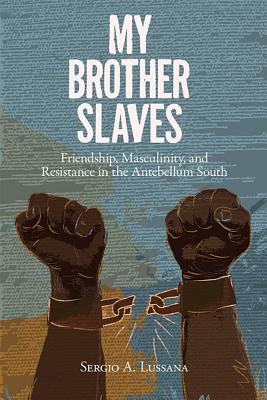
#19
My Brother Slaves
Friendship, Masculinity, and Resistance in the Antebellum South
2016
Trapped in a world of brutal physical punishment and unremitting, back-breaking labor, Frederick Douglass mused that it was the friendships he shared with other enslaved men that carried him through his darkest days.
In this pioneering study, Sergio A. Lussana offers the first in-depth investigation of the social dynamics between enslaved men and examines how individuals living under the conditions of bondage negotiated masculine identities. He demonstrates that African American men worked to create their own culture through a range of recreational pursuits similar to those enjoyed by their white counterparts, such as drinking, gambling, fighting, and hunting. Underscoring the enslaved men's relationships, however, were the sex-segregated work gangs on the plantations, which further reinforced their social bonds.
Lussana also addresses male resistance to slavery by shifting attention from the visible, organized world of slave rebellion to the private realms of enslaved men's lives. He reveals how these men developed an oppositional community in defiancé of the regulations of the slaveholder and shows that their efforts were intrinsically linked to forms of resistance on a larger scale. The trust inherent in these private relationships was essential in driving conversations about revolution.
My Brother Slaves fills a vital gap in our contemporary understanding of southern history and of the effects that the South's peculiar institution had on social structures and gender expression. Employing detailed research that draws on autobiographies of and interviews with former slaves, Lussana's work artfully testifies to the importance of social relationships between enslaved men and the degree to which these fraternal bonds encouraged them to resist.

#24
Blood in the Hills
A History of Violence in Appalachia
2011
To many antebellum Americans, Appalachia was a frightening wilderness of lawlessness, peril, robbers, and hidden dangers. The extensive media coverage of horse stealing and scalping raids profiled the region's residents as intrinsically violent. After the Civil War, this characterization continued to permeate perceptions of the area and news of the conflict between the Hatfields and the McCoys, as well as the bloodshed associated with the coal labor strikes, cemented Appalachia's violent reputation. Blood in the Hills: A History of Violence in Appalachia provides an in-depth historical analysis of hostility in the region from the late eighteenth to the early twentieth century. Editor Bruce E. Stewart discusses aspects of the Appalachian violence culture, examining skirmishes with the native population, conflicts resulting from the region's rapid modernization, and violence as a function of social control. The contributors also address geographical isolation and ethnicity, kinship, gender, class, and race with the purpose of shedding light on an often-stereotyped regional past. Blood in the Hills does not attempt to apologize for the region but uses detailed research and analysis to explain it, delving into the social and political factors that have defined Appalachia throughout its violent history.
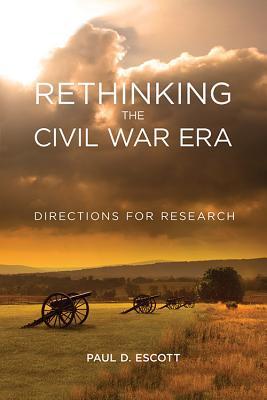
#25
Rethinking the Civil War Era
Directions for Research
2018
Arguably, no event since the American Revolution has had a greater impact on US history than the Civil War. This devastating and formative conflict occupies a permanent place in the nation's psyche and continues to shape race relations, economic development, and regional politics. Naturally, an event of such significance has attracted much attention from historians, and tens of thousands of books have been published on the subject. Despite this breadth of study, new perspectives and tools are opening up fresh avenues of inquiry into this seminal era.
In this timely and thoughtful book, Paul D. Escott surveys the current state of Civil War studies and explores the latest developments in research and interpretation. He focuses on specific issues where promising work is yet to be done, highlighting subjects such as the deep roots of the war, the role of African Americans, and environmental history, among others. He also identifies digital tools which have only recently become available and which allow researchers to take advantage of information in ways that were never before possible.
Rethinking the Civil War Era is poised to guide young historians in much the way that James M. McPherson and William J. Cooper Jr.'s Writing the Civil The Quest to Understand did for a previous generation. Escott eloquently charts new ways forward for scholars, offering ideas, questions, and challenges. His work will not only illuminate emerging research but will also provide inspiration for future research in a field that continues to adapt and change.

#27
The Political Career of W. Kerr Scott
The Squire from Haw River
2014
When W. Kerr Scott (1896-1958) began his campaign for the North Carolina gubernatorial seat in 1948, his opponents derided his candidacy as a farce. However, the plainspoken dairy farmer quickly gathered loyal supporters and mobilized a grassroots attack on the entrenched interests that had long controlled the state government, winning the race in a historic upset.
In this meticulously researched book, Julian M. Pleasants traces Scott's productive and controversial political career, from his years as North Carolina commissioner of agriculture, through his governorship (1949—1953), to his brief tenure as a U.S. senator (1954—1958). Scott was elected at a time when southern liberals were on the rise in post—World War II America. McCarthyism and civil rights agitation soon overwhelmed progressivism, but the trend lasted long enough for the straight-talking "Squire from Haw River" to enact major reforms and establish a reputation as one of the more interesting and influential southern politicians of the twentieth century.
Scott introduced groundbreaking legislation that placed the Tar Heel State at the forefront of the southern economy, improving roads, schools, and medical facilities while widening access to electric and phone service. Scott was also relatively socially progressive and made significant appointments of women, African Americans, and liberals to positions of influence and power. This long-overdue look at his political career illuminates the spirit that transformed an introspective, segregated society dependent on tobacco and textiles into a vibrant, diversified economy at the center of the industrial, banking, and information revolution in the South.
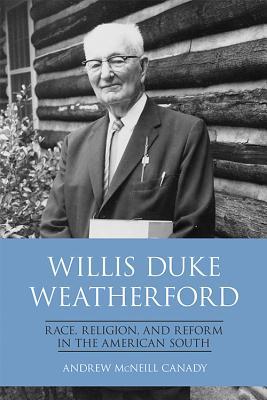
#28
Willis Duke Weatherford
Race, Religion, and Reform in the American South
2016
At the turn of the twentieth century, few white, southern leaders would speak out in favor of racial equality for fear of being dismissed as too progressive. Willis Duke Weatherford (1875–1970), however, defied convention as one of the first prominent white southern liberals to dedicate his life to reforming the South's social system, eliminating violence and injustice through education, and opening a dialogue among the affected groups. His energetic efforts led to a rise in progressive action in the region, though at times his own beliefs prevented him from advocating for absolute racial equality. As a result, historians debate Weatherford's legacy: Was he a forward-thinking supporter of human rights or merely a moderate paternalist?
In this comprehensive biography, Andrew McNeill Canady offers a reassessment of the influential educator's life and work. Canady surveys Weatherford's work with institutions such as the YMCA, Berea College, and Fisk University and illuminates his many efforts to foster dialogue among southerners of all races about religion, race relations, and Appalachia. He also examines Weatherford's reluctance to challenge Jim Crow laws and the capitalist economy that contributed to the poverty of African Americans and the people of Appalachia, revealing the limitations that southern reformers faced and the often-difficult compromises they were forced to make.
During a career that spanned from the Progressive Era to the civil rights movement, Weatherford was involved in virtually every significant southern liberal effort of his time. Past research has focused primarily on Weatherford's early work, but Canady's study is the first to investigate the full trajectory of his life and career. This overdue biography makes a significant contribution to literature on the long civil rights movement and the development of southern liberalism.
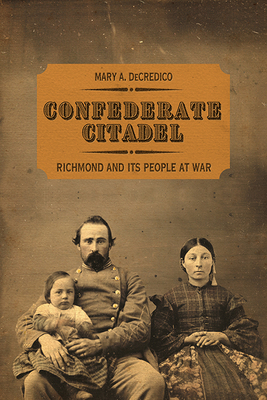
#30
Confederate Citadel
Richmond and Its People at War
2020
Richmond, Virginia: pride of the founding fathers, doomed capital of the Confederate States of America. Unlike other Southern cities, Richmond boasted a vibrant, urban industrial complex capable of producing crucial ammunition and military supplies. Despite its northern position, Richmond became the Confederacy's beating heart—its capital, second-largest city, and impenetrable citadel. As long as the city endured, the Confederacy remained a well-supplied and formidable force. But when Ulysses S. Grant broke its defenses in 1865, the Confederates fled, burned Richmond to the ground, and surrendered within the week. Confederate Citadel: Richmond and Its People at War offers a detailed portrait of life's daily hardships in the rebel capital during the Civil War. Here, barricaded against a siege, staunch Unionists became a dangerous fifth column, refugees flooded the streets, and women organized a bread riot in the city. Drawing on personal correspondence, private diaries, and newspapers, author Mary A. DeCredico spotlights the human elements of Richmond's economic rise and fall, uncovering its significance as the South's industrial powerhouse throughout the Civil War.
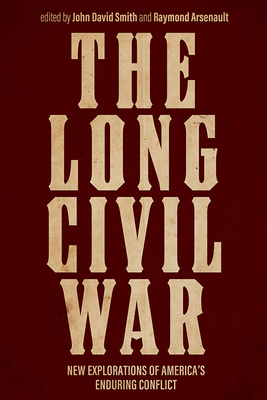
#32
The Long Civil War
New Explorations of America's Enduring Conflict
2021
In this wide-ranging volume, eminent historians John David Smith and Raymond Arsenault assemble a distinguished group of scholars to build on the growing body of work on the "Long Civil War" and break new ground. They cover a variety of related subjects, including antebellum missionary activity and colonialism in Africa, the home front, the experiences of disabled veterans in the US Army Veteran Reserve Corps, and Dwight D. Eisenhower's personal struggles with the war's legacy amid the growing civil rights movement. The contributors offer fresh interpretations and challenging analyses of topics such as ritualistic suicide among former Confederates after the war and whitewashing in Walt Disney Studios' historical Cold War–era movies. Featuring many leading figures in the field, The Long Civil War meaningfully expands the focus of mid-nineteenth-century history as it was understood by previous generations of historians.
